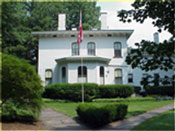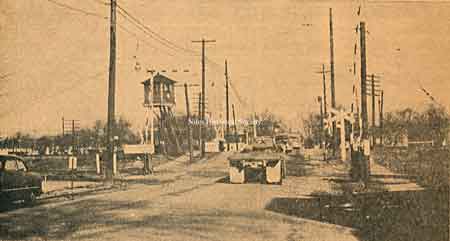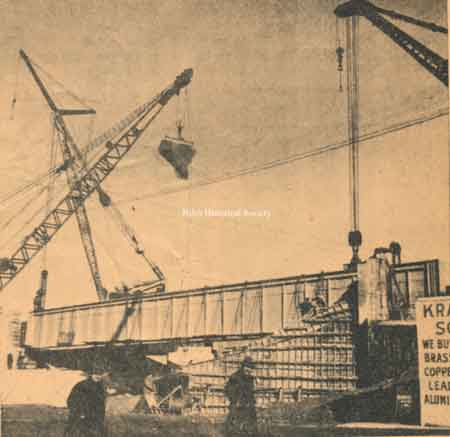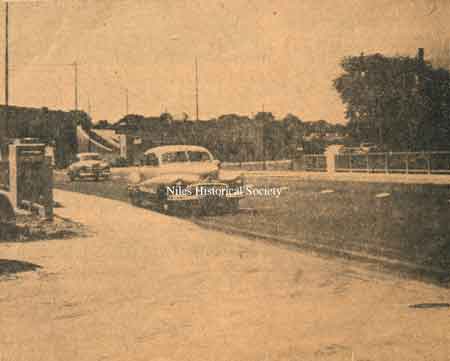|
Railroad
Grade Crossing Project.
Photos taken by J.J. Harvey and appeared
in a Niles Daily Times special section July 1954.
View of North Main Street grade crossing with gates and watch
tower guarding the railroad crossover at this location as it looked
in 1953, prior to the Grade Elimination Project.
This project would alter the traffic patterns
by connecting Robbins Avenue to Main Street, extend State Street
to intersect with Robbins Avenue, and raise the B&O railroad
yards to accomodate the second overpass on Robbins Avenue. Secondly,
the project would eliminate the grade crossings on North Main
Street near the General Electric plant with two new overpasses,
one for the Erie Railroad and a second for the B&O railroad.
|
|
| 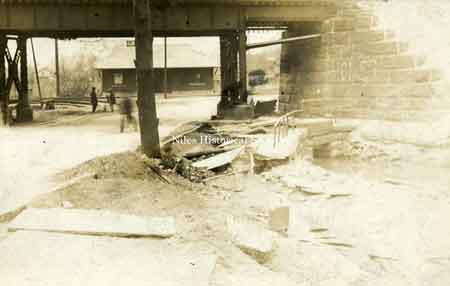
|
Taken
in 1913, this photograph shows the Erie Railroad overpass at Robbins
Avenue as it winds into Church Street. In the background is the
way station for the trolley cars that would travel throughout
the city. Herb Stein Lincoln-Mercury was located there
in the early 1950s. Leonard’s Glass and Dr.
Kuhn’s Eyeglass Shop were there more recently.
This continued to be the overpass until 1953
when the Grade Elimination Project began and Robbins Avenue finally
intersected with North Main Street and the B&O railroad yards
were raised six feet. A second overpass for the B&O Railroad
over Robbins was erected. Within this project, Church Street no
longer intersected Robbins Avenue and State Street was extended
to Robbins Avenue. |
|
|
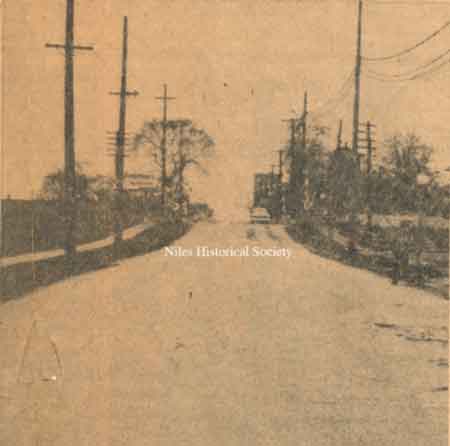
View looking south on Main Street, the General
Electric Plant was on the left and Clayman Scrap Iron&Steel
was on the right. |
Over
fourteen people have died at the various railroad crossings located
on Robbins Avenue and North Main Street with 32 more accidents
reported according to a October 14, 1949 Daily Times article.
This editorial continues encouraging the passage of a bond issue
to pay for the Grade Elimination Project. It further states, “Niles
has not had a major civic improvement since the completion of
the Viaduct in 1933, this is an opportunity to provide additional
locations for retail stores, widen North Main Street and provide
a new wider bridge on Robbins Avenue across Mosquito Creek.”
Three city engineers toiled to realize grade
separation during the past two decades (1930s and 1940s) on work
relative to realization of the Niles grade elimination project.
These included Robert D. ‘Mac’
MacLean, city engineer in much of the 1930 decade and into
the early 1940’s. It has been said that MacLean was active
in behalf of the grade separation during the ‘lull’
which occurred in the depression-plagued 1930’s, prepared
a sketch of what the Niles project should be. Some who saw it
say that it compares remarkably with the entire extent of the
project to be completed tomorrow (July 21, 1954).
MacLean, came to Niles from Oakmont PA. after
WW1, and was with Sharon Steel corporation for a number of years.
His years as Niles’ city engineer included the busy WPA
years of the 1930’s when many city streets were improved
to provide aid for the unemployed.
Continued below in right column. |
|
|
|
| 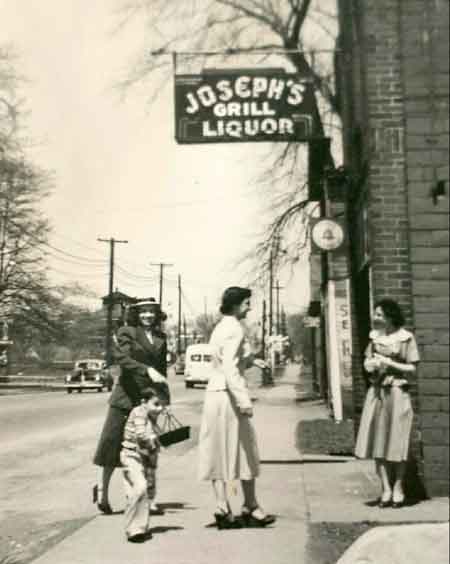
View looking north on Main Street with the railroad
crossing watch tower in the background and Joseph's Grill in the
foreground. ca 1948. |
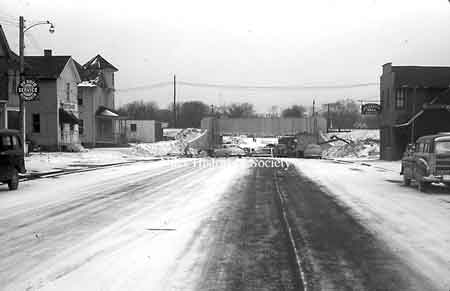
Same view in 1954 winter as the North Main Street
underpass work is progressing. The light gray car is turning up
Maple Avenue to go to the temporary railroad tracks crossing near
the scrap yard (where McDonald's is now located).
Joseph's Grill is seen on the right-hand side
past the Chevrolet station wagon parked in front of Stiver Chevrolet
dealership. |
Story Continued.
MacLean’s tenure as city engineer
was followed by that of the late Jerrie J. Flickinger
who served in the engineer’s office from the early 1940’s
until his retirement in 1950. It was during that period that much
of the important preliminary estimating and planning of the project
was completed.
G.P. Fisher, the present city engineer
was appointed in 1950 and has served during the important final
planning and construction phases of the grade separation project.
Considerable work involving city engineering, street changes,
and utility line changes during the construction along with pre-construction
planning and liaison work with other participating agencies.
Others who worked hard to see the
grade separation ‘dream’ become reality include Bert
Holloway, who retired in 1953 after almost 50 years as the
superintendent of the municipal Water and Light Department. Holloway
worked closely with other officials in planning involving the
alterations in city utility lines and related work in the project.
So has his successor, William Burgess, appointed superintendent
in 1953 and J.J. Harvey, long-time assistant superintendent of
the Water and Light Department. |
|
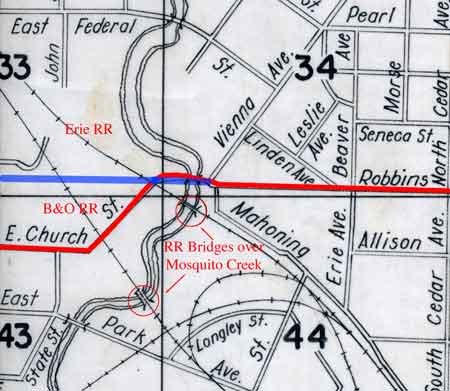
Map on left showing the changes
in the Robbins Avenue roadway. The current path is shown in
red where Robbins Avenue conncts with the lower curve of Church
Street passing under the pre-1913 underpass.
The blue line shows how Robbins
Avenue would pass under the Erie and B&O tracks and connect
with North Main Street.
|
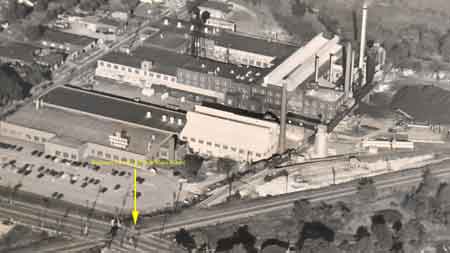
Aerial view of General Electric Plant and the
North Main Street Erie railroad crossing.
The grade elimination project would eliminate
the dangerous crossing where many automobile accidents had occurred
with trains.
Over the years, several deaths(14) had occurred
when cars failed to heed the watchtower warnings of approaching
trains.
|

Aerial view on the right shows the B&O freight
yard and terminal, grain & feed store at the curve on Church
Street which connected to Robbins Avenue. PO1.1458
|
|
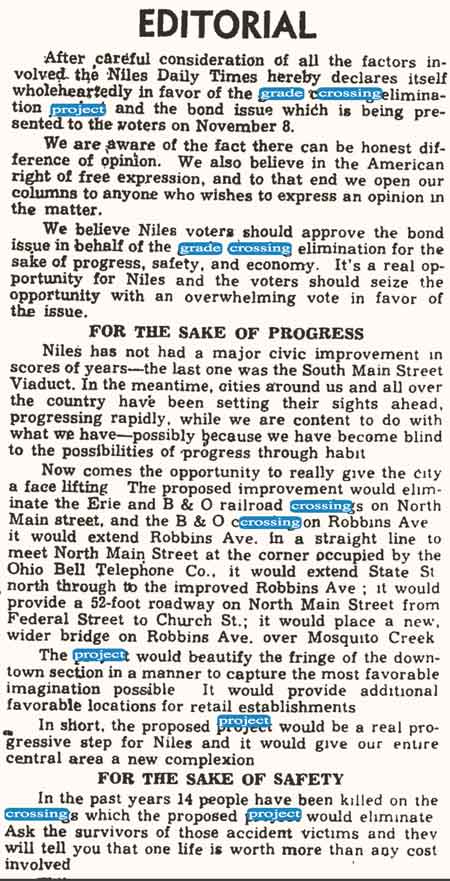
Niles Times Editorial promoting the passage of
a bond issue to fund the Grade Project. |
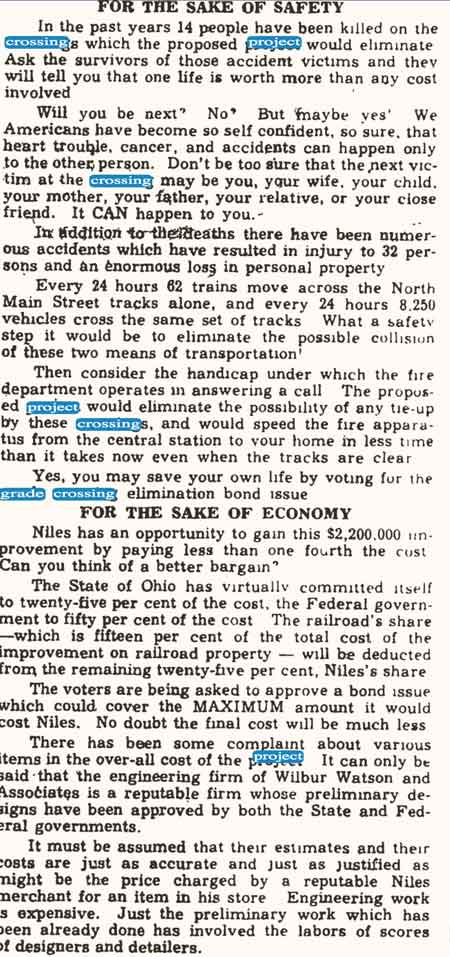 |
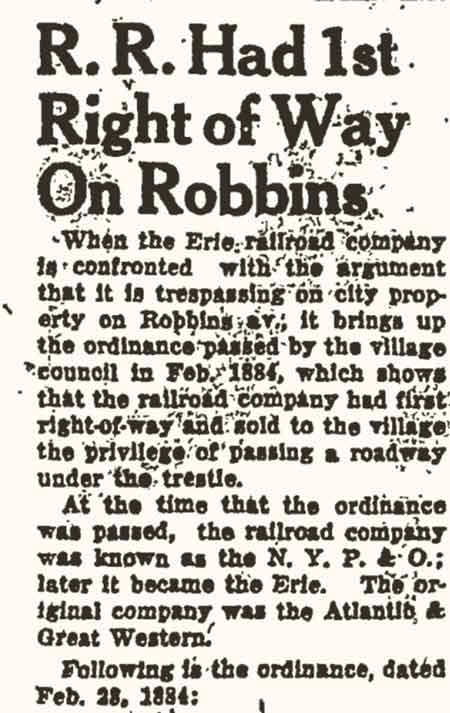
As a side note, when the Erie railroad was confronted
with the argument that it is trespassing on city property on Robbins
Avenue, it brings up the ordinance passed by the village council
in 1884 which shows that the railroad had first right-of-way and
sold to the village the privilege of passing a roadway under the
trestle. |
|
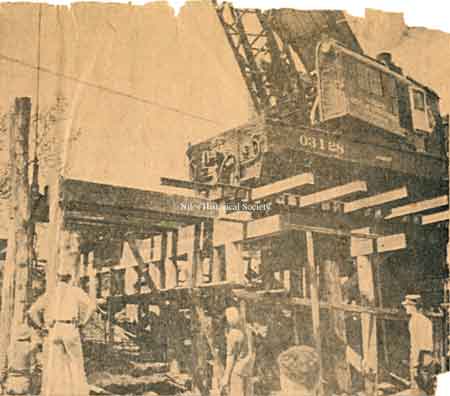
Scaffolding erected to allow the
railroad crane to lift support beams into place.
|
|
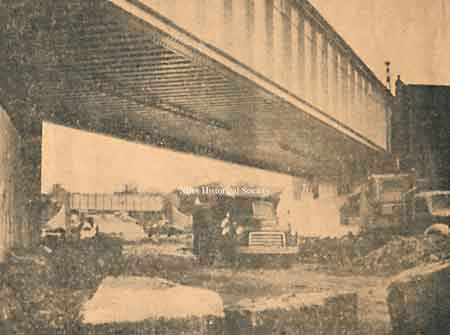
The newly erected railroad overpasses
on Robbins Avenue. The Erie (closest) and the B&O (in the
background).
|
|
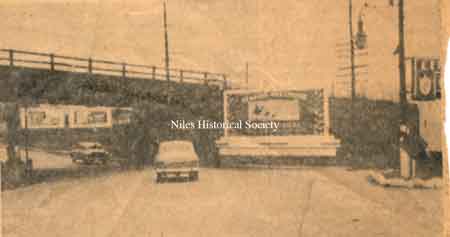
Old Robbins Avenue underpass,
1952.
|
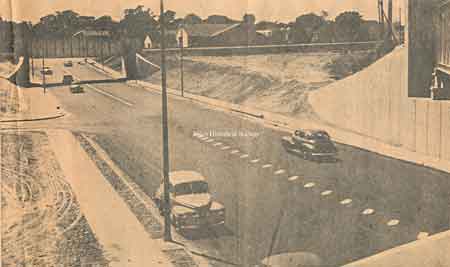
New Robbins Avenue underpass, 1954.
Right: New Robbins Avenue bridge over Mosquito
Creek with Herb Stein dealership.
|
|
|
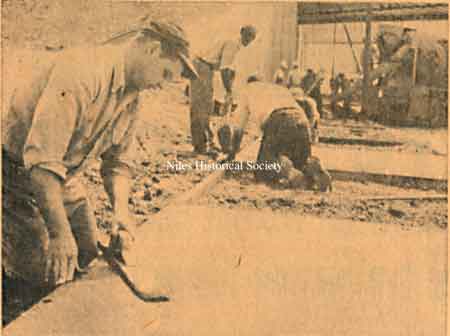
Workers completing cement sidewalks. |
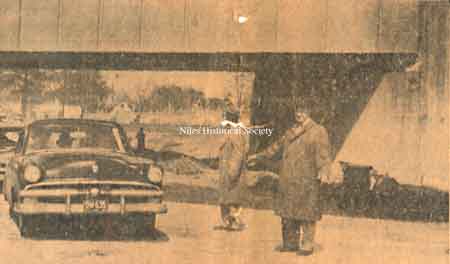
Mayor Edward P. Lenney welcomes the first car
through the Main Street underpass.
Right: Driver's new view of Robbins Avenue. |
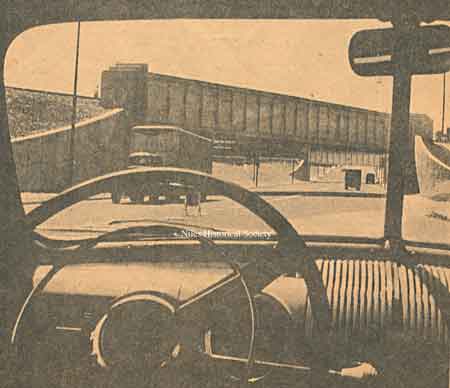 |
|
| Photos by: J.J. Harvey,
who makes a hobby of photography, is among the lucky local residents
who have excellent pictures of the project grade separation areas
as it appeared before construction and changes swung into full swing
in the spring of 1953. These include a photo of the Main Street
crossing before it was closed for construction in 1953 (article
and photos appeared in Daily Times special insert July 1954). |
|
| |
|
|


